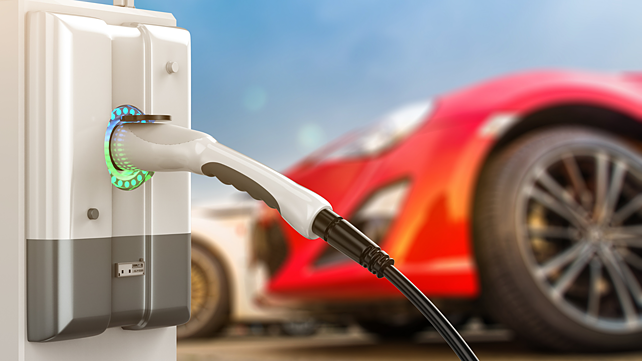
The article is co-authored by Rajeshwari K.
Rising pollution levels, carbon footprints, and decreasing air quality over the world are ringing alarm bells across the auto sector. India, with a population of 1.38 bn people, is one of the world's most polluted countries. To combat this pollution, the Indian government is focusing on and implementing a “Shared, Connected, and Electric Mobility Solution”, with the aspiration of securing 100% electrification by 2030.
The Electric Vehicle (EV) alternative has long been regarded as a game-changer in India's automobile sector. Reliance on oil imports strengthened the case for EV adoption. Though EV technology offers numerous opportunities for the Indian auto industry, there are huge challenges too.
Challenges In The Shift To EVs
More people driving EVs is at the core of the auto industry agenda for sustainable development. However, there are obstacles on the transition to EVs. Sample these:
- The Indian automobile industry (which was already in reverse gear) is experiencing a further significant structural slowdown due to COVID-19 lockdown, supply chain issues, semiconductor shortages, non-banking finance corporations’ liquidity crisis, etc;
- Changing government regulations and other EV manufacturing restrictions pose severe challenges to the auto industry. For instance, BS 6 regulations. It's becoming more difficult to sell outdated BS4 vehicles as government restrictions change. As a result, the number of BS4 inventory has increased. Constantly changing mobility landscape, government regulations and other technological advancements had a substantial impact on cost economies;

- Urbanisation is another challenge for the automotive industry. The availability of alternatives (rental, car sharing, Ola/ Uber), and the lack of parking spaces in large cities, have forced people to postpone their car-buying decisions;
- The cost of purchasing an EV, particularly the regular battery replacements required, is indeed a barrier to e-vehicle adoption. Emerging countries like India that have a price-sensitive population need an affordable option. EV makers should come forward together and collaborate with the government to make this a reality;
- In addition, people are reluctant to adopt EVs because of the cost, technical, and charging station challenges. Though the government announced various incentives, the upfront costs for implementing the infrastructure will be tremendous and has to be borne by the auto players.
The Way Forward
Strengthening The Supply Chain: Automobile supply chain is a complex system of manufacturers and technology providers, where several players are interrelated with each other in multifaceted decision making. It is an important catalyst of the Indian economy, contributing 6.4% of GDP, around 35% of manufacturing GDP, and directly supporting over eight million jobs (OEMs, suppliers, and dealers) and potentially 30 million more in the value chain [1].
The firms must focus on their supply chain, as this is an important determinant of competitiveness. While much research has been conducted on the challenges in the EV supply chain, it should also be noted that newer challenges emerge and newer technologies are created in this domain on a daily basis, increasing the possibility of supply chain network improvement.

In comparison to the conventional auto supply chain, the battery distribution network is still relatively new. The structured network of EV players, and charging stations, is still at a nascent stage. Firms must collaborate with one another to build testing infrastructure for e-vehicles. Constantly evolving consumer purchasing patterns, increased competition and the electric shift within the Indian markets are driving the auto industry to improve its competitiveness.
To be competitive, companies must improve not only their individual performance but also their entire supply chain network. Despite significant breakthroughs in academic research and practices, many businesses continue to struggle to grasp the complexities of coordinated planning and supply activities among their supply network participants.
Firms must move from competition to cooperation and develop procurement and distribution clusters. Also reducing dependencies on imported battery technologies and other parts will improve and strengthen the auto supply chain.
Addressing Customer Anxieties: India is a cost-conscious market. The main difficulty for automakers is to give a seamless transition from internal combustion vehicles to e-vehicles at a reasonable price. Consumer preferences are influenced by vehicle performance, which is seen as an important component. Customers are particularly concerned about driveability in severe conditions, such as bad weather, at night, or when visibility is poor.
We recently conducted a study on e-vehicle adoption among 150 users/ prospects. We found that financial cost and vehicle performance were the key purchase drivers (more than merely a concern for the environment).
EVs were formerly promoted as a more cost-effective approach. But our survey findings reveal that the cost of purchasing an EV, specifically where frequent battery replacements are required, is actually a hindrance to EV adoption. As a result, it is critical to address this by providing more incentives to consumers to stimulate purchase [2].
Lack of charging stations, range anxiety, charging time, lack of awareness about battery usage, battery replacement cost, and other technical issues would be shortcomings in the EVs. Firms must collaborate and come forward to address the customer anxieties and educate them to adopt sustainable vehicles.

Public-Private Partnership: The transition from internal combustion engines to electric vehicles is not simple. The current surge of EV battery fires has put to test several aspects of the country's electric manufacturing process [3].
Because of the vastness of rural places, it is nearly impossible to have public charging stations. While charging at home they should take all the precautions. Proper awareness about battery usage can bring radical changes and add efficiency to the current state of the electric vehicle ecosystem. However, implementing these in emerging nations like India will be a daunting task given the current level of technology, infrastructure, human resources and government regulatory practices.
A proper strategic framework and public-private partnership will be the way ahead. The government had to push for the establishment of a nationwide network of charging stations. The success of a sustainable EV goal in reality depends on two factors: affordability and availability of public charging stations. A robust and easily accessible network of EV charging infrastructure can provide the necessary push to meet this goal.
To increase customer acceptance of EVs, the government and private sector must work together to make a streamlined charging infrastructure not only in major cities but connecting India's rural roads as well.
Conclusion
The catalysts to EV adoption in the country include strengthening the supply chain, developing procurement, distribution, and EV testing clusters. Moreover, addressing customer concerns, raising awareness about EV technologies, gaining larger customer base and improving charging infrastructure through public-private partnerships are equally important.
References
[1] Goenka, 2021
[2] Krishnamurthy, Muralidharan & Rajendran, 2022
[3] Charan, 2022
About the Authors: Dr Rammyaa M is Assistant Professor, Supply Chain Management and her co-author Dr Rajeshwari K is a faculty member (Marketing) at the Great Lakes Institute of Management.